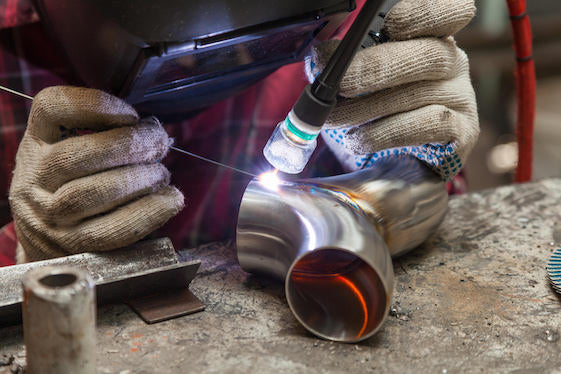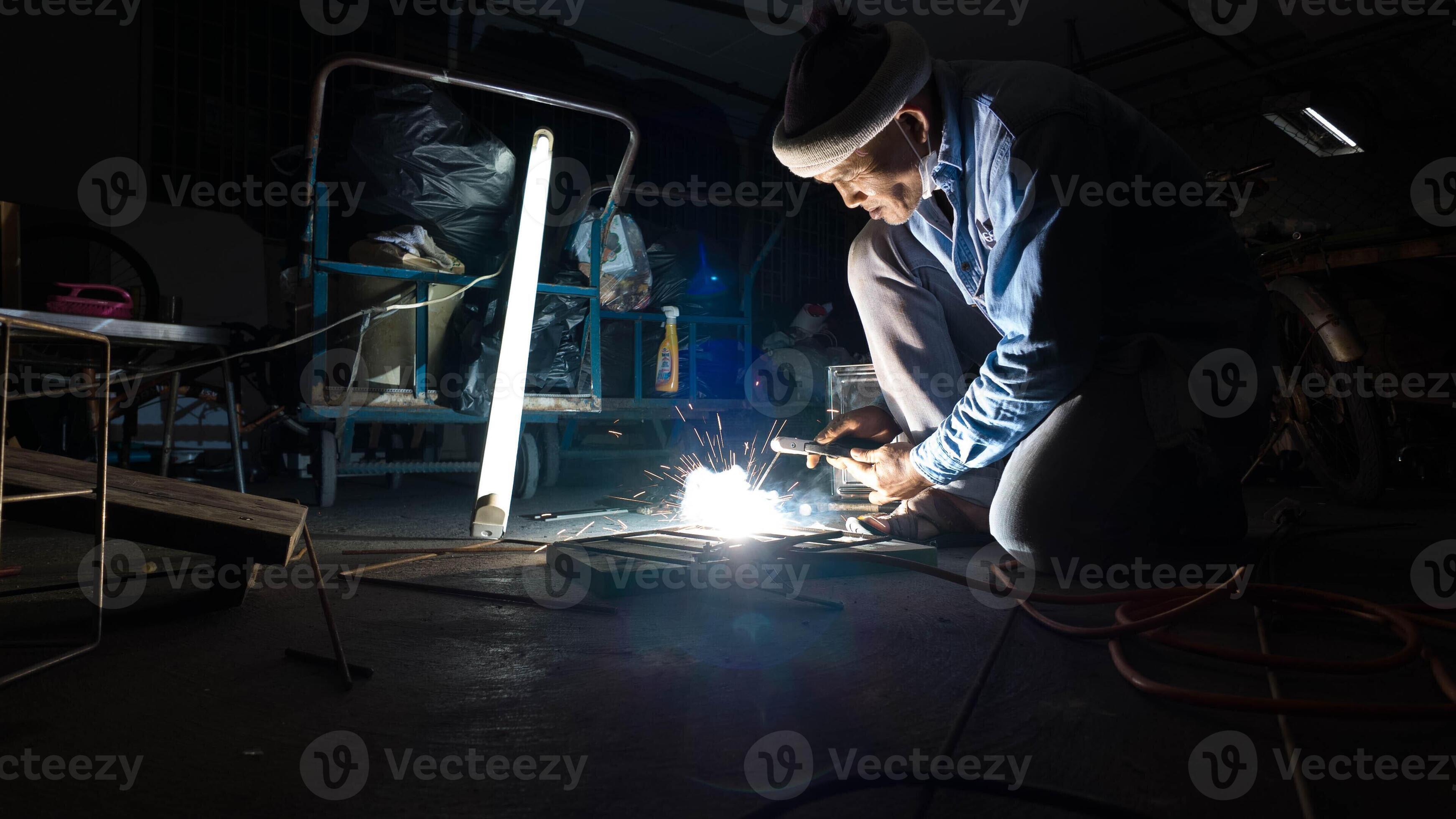Everything about Welding: Key Insights Into Techniques and Best Practices for Success
Welding encompasses a selection of methods, each fit for specific products and applications. Comprehending these methods, such as GMAW, SMAW, and TIG, is essential for achieving excellent outcomes. The appropriate devices and safety and security practices can not be forgotten. As preparation and fixing play important duties in the welding procedure, mastering these elements can significantly boost the top quality of the end product. What are the essential aspects that ensure a successful weld?
Comprehending Various Welding Methods
Welding techniques include a variety of approaches, each suited to specific applications and materials. Among one of the most typical techniques are Gas Metal Arc Welding (GMAW), Shielded Steel Arc Welding (SMAW), and Tungsten Inert Gas Welding (TIG) GMAW, also known as MIG welding, is popular for its rate and convenience, making it excellent for slim materials. SMAW, or stick welding, is preferred for its simpleness and effectiveness in outdoor settings, especially with thicker metals. TIG welding provides accuracy and control, making it suitable for complex job and non-ferrous metals (Montana Mobile Welding and Repair). Each strategy has its distinct benefits and considerations, enabling welders to choose the best technique based on the job's needs, product type, and wanted end results. Recognizing these strategies is necessary for effective welding
Important Welding Devices and Devices
While various welding techniques need details abilities, the best devices and tools are similarly crucial for accomplishing top quality outcomes. Vital welding tools includes welding equipments, which vary depending on the strategy-- such as MIG, TIG, or stick welding. Protective equipment, including gloves, helmets, and aprons, assurances safety and security and convenience during the process. Additionally, clamps and fixtures help secure products in place, making certain precision in welds. Consumables like welding rods, cable, and securing gas are also crucial components that affect the quality of the weld. Moreover, tools such as cutters and mills assist in surface preparation and post-weld completing, adding to a specialist end result. Purchasing premium tools ultimately improves the efficiency and efficiency of welding jobs.
Security Practices in Welding
Proper safety practices are crucial in the welding industry to secure employees from potential risks. Welders should wear ideal individual safety equipment (PPE), including helmets with correct shading, gloves, and flame-resistant clothes. Ample ventilation is vital to lower direct exposure to unsafe fumes and gases created during the welding process. In addition, employees should be learnt the right handling of welding devices to stop crashes. Fire safety procedures, such as keeping combustible materials away from the welding location and having fire extinguishers readily available, are necessary. Routine assessments of devices and workspaces can aid identify potential hazards before they lead to accidents. By sticking to these safety and security practices, welders can produce a more secure working setting and lessen risks related to their profession.
Readying Materials for Welding
Preparing products for welding is a vital action that considerably affects the top quality and integrity of the end product (Montana Mobile Welding and Repair). Proper prep work includes cleaning the surfaces to eliminate contaminants such as oil, dirt, and rust, which can jeopardize the weld. Techniques such as grinding, fining sand, or using solvents are commonly employed to accomplish a tidy surface. In addition, making sure that the products fit with each other well is vital; voids can cause weak welds. It's likewise essential to take into account the placement and positioning of the elements, as this will impact the convenience of welding and the final result. Finally, picking the suitable filler material and ensuring compatibility with check the base metals is crucial for achieving solid, durable welds
Tips for Achieving High-Quality Welds
Achieving high-quality welds needs interest to information and adherence to finest methods throughout the welding procedure. Appropriate joint prep work is essential, ensuring surfaces are cost-free and tidy from impurities. Selecting the proper filler material and welding method based upon the base steels is critical for optimal bonding. Preserving consistent traveling speed and angle while welding can advertise and avoid defects uniformity. Furthermore, controlling warm input is necessary; excessive warm can lead to warping and weakened joints. If needed, consistently evaluating the welds throughout the process permits for immediate modifications. Lastly, utilizing ideal post-weld treatments, such as cleansing and stress alleviation, can enhance the sturdiness and integrity of the weld, ultimately ensuring an effective result.
Troubleshooting Typical Welding Issues
Welding frequently presents obstacles that can affect the top quality and integrity of the end product. Common problems such as porosity, irregular weld beads, and getting too hot can arise, each requiring details fixing techniques. Comprehending these troubles is necessary for welders to enhance their skills and attain excellent results.
Porosity Troubles Clarified
Porosity can typically be overlooked, it continues to be a critical concern in welding that can endanger the integrity of an ended up item. Porosity refers to the visibility of small gas pockets within the weld bead, which can lead and damage the joint to early failing. This problem commonly occurs from pollutants, dampness, or improper protecting gas coverage throughout the welding procedure. To minimize porosity, welders must confirm that the base materials are dry and tidy, utilize ideal shielding gases, and keep regular welding parameters. Regularly examining the equipment and environment can additionally assist recognize potential problems before they manifest in the weld. Dealing with porosity effectively is necessary for attaining strong, durable welds that satisfy high quality criteria.

Inconsistent Weld Beads
Inconsistent weld grains can considerably influence the top quality and stamina of a finished item. Various variables add to this issue, including incorrect traveling rate, inaccurate amperage settings, and inconsistent electrode angles. When the welder moves as well swiftly, a grain may appear slim and lack infiltration, while moving as well slowly can cause extreme build-up. Additionally, making use of the incorrect amperage can result in either undercutting or too much spatter, both of which compromise weld honesty. The welder's technique, such as inconsistent torch motion, can additionally result in unequal bead look. To mitigate these issues, welders must focus on keeping consistent, controlled activities and making sure appropriate equipment settings to accomplish uniformity in their welds. Consistency is key to attaining solid and reputable welds.
Overheating and Warping Issues
Too much warmth during the welding process can cause considerable overheating and contorting issues, influencing the structural honesty of the work surface. These issues frequently show up as distortion, which can compromise placement and fit-up, making further setting up testing. Aspects contributing to overheating consist of the selection of welding parameters, such as voltage and take a trip speed, as well as the type of product being bonded. To mitigate these problems, welders ought to keep regular traveling speed and proper warm input while keeping track of the work surface temperature. Additionally, preheating or post-weld warm treatment can aid relieve tensions triggered by rapid air conditioning - Fabrication. Normal assessment and adherence to ideal methods are essential in protecting against overheating and making certain the long life and dependability of welded structures
Often Asked Inquiries
What Are the Profession Opportunities in the Welding Sector?
The welding sector offers diverse career chances, including placements as welders, designers, teachers, and examiners. Specialists can operate in manufacturing, construction, you could look here aerospace, and automobile industries, taking advantage of strong demand and affordable incomes in numerous duties.
Exactly How Can I Boost My Welding Rate Without Giving Up Quality?
To improve welding speed without giving up quality, one must practice reliable techniques, maintain tools, optimize setups, and boost hand-eye coordination. Routine training and seeking responses can also greatly add to attaining much faster, premium welds.
What Qualifications Are Readily Available for Welders?
Various certifications exist for welders, consisting of those from the American Welding Society (AWS), the National Facility for Construction Education And Learning and Research (NCCER), and different industry-specific companies. These credentials improve employability and show ability more helpful hints effectiveness.
Exactly How Does Welding Influence the Characteristics of Metals?
Welding influences the properties of steels by changing their microstructure, which can result in adjustments in solidity, strength, and ductility. Warm input and air conditioning rates throughout the procedure significantly affect these material qualities.
Can I Bonded Dissimilar Metals With Each Other?
